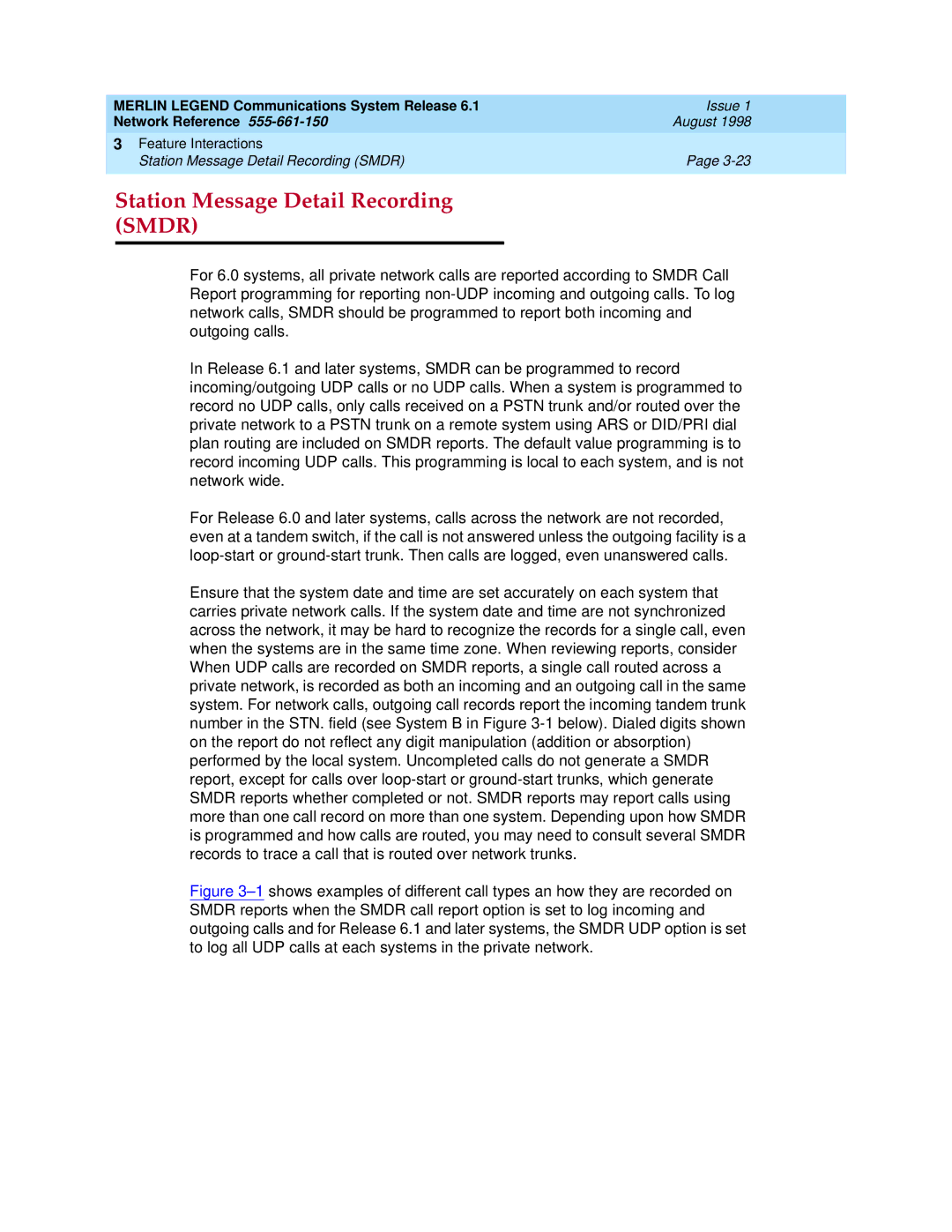MERLIN LEGEND Communications System Release 6.1 |
| Issue 1 | |
Network Reference |
| August 1998 | |
3 Feature Interactions |
|
| |
| Station Message Detail Recording (SMDR) |
| Page |
|
|
|
|
| Station Message Detail Recording | 3 | |
| (SMDR) | ||
|
|
|
|
For 6.0 systems, all private network calls are reported according to SMDR Call Report programming for reporting
In Release 6.1 and later systems, SMDR can be programmed to record incoming/outgoing UDP calls or no UDP calls. When a system is programmed to record no UDP calls, only calls received on a PSTN trunk and/or routed over the private network to a PSTN trunk on a remote system using ARS or DID/PRI dial plan routing are included on SMDR reports. The default value programming is to record incoming UDP calls. This programming is local to each system, and is not network wide.
For Release 6.0 and later systems, calls across the network are not recorded, even at a tandem switch, if the call is not answered unless the outgoing facility is a
Ensure that the system date and time are set accurately on each system that carries private network calls. If the system date and time are not synchronized across the network, it may be hard to recognize the records for a single call, even when the systems are in the same time zone. When reviewing reports, consider When UDP calls are recorded on SMDR reports, a single call routed across a private network, is recorded as both an incoming and an outgoing call in the same system. For network calls, outgoing call records report the incoming tandem trunk number in the STN. field (see System B in Figure
